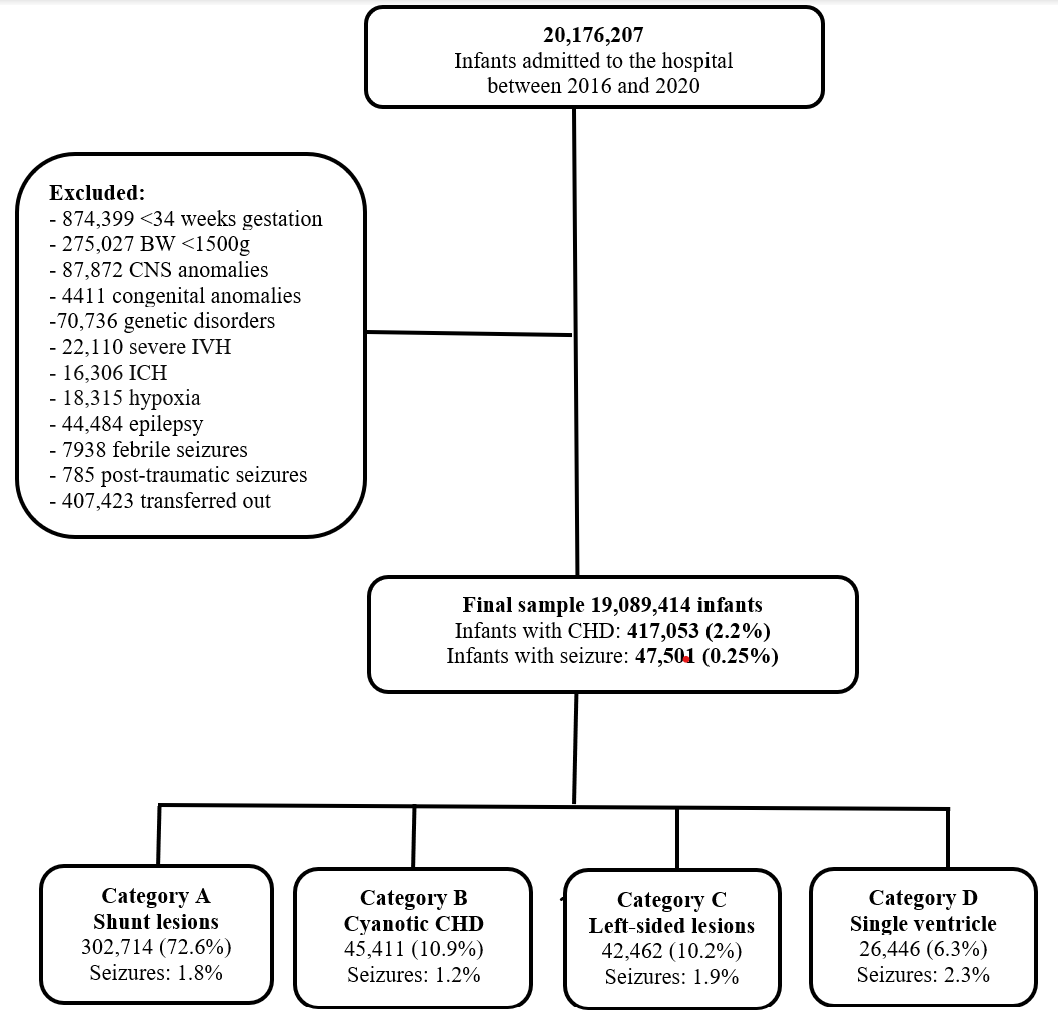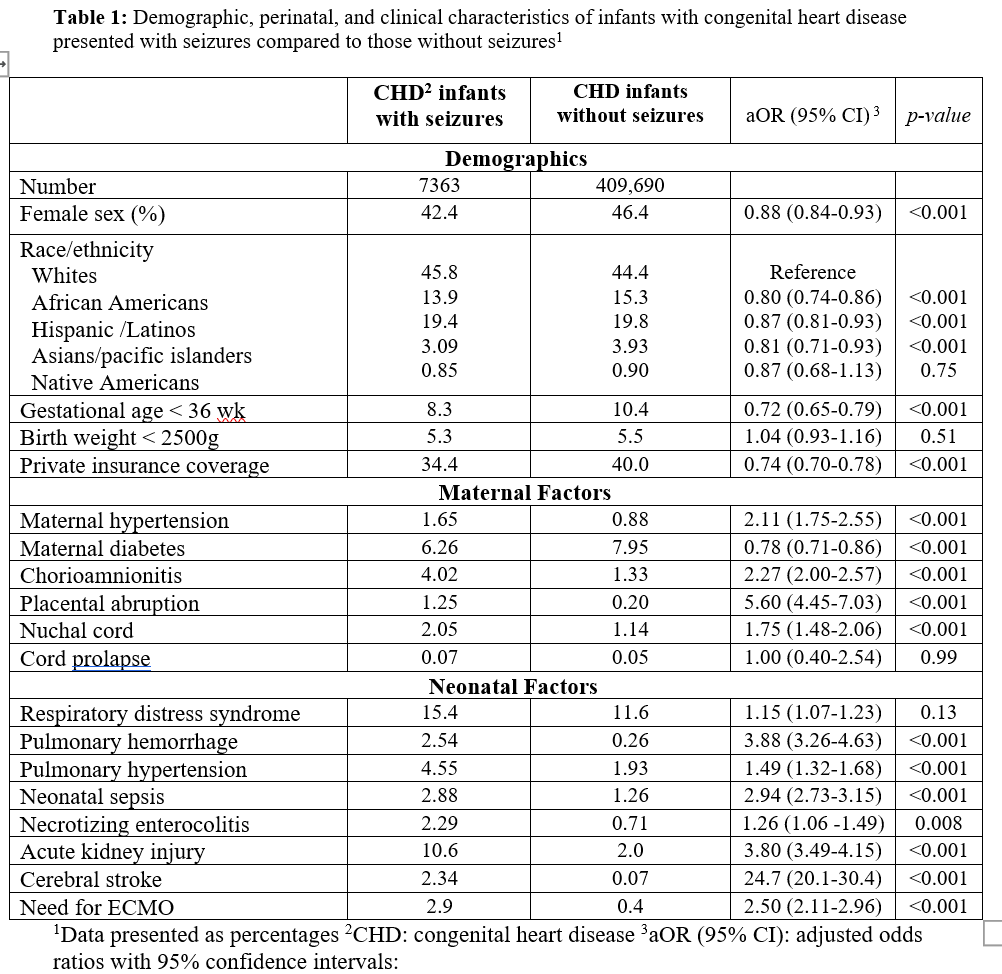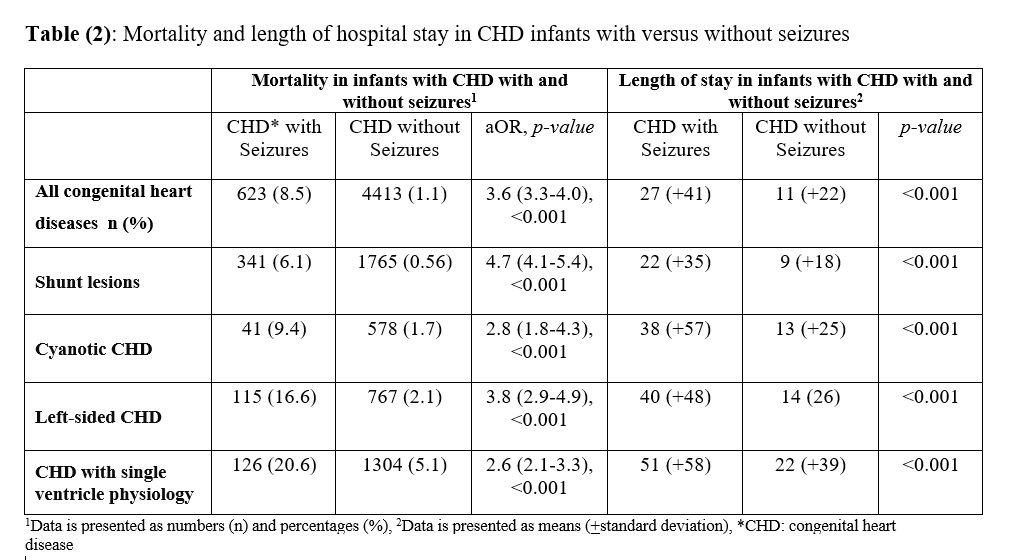Cardiology 3
Session: Cardiology 3
173 - Seizures in Infants with Congenital Heart Disease: A National Cohort Study
Friday, April 25, 2025
5:30pm - 7:45pm HST
Publication Number: 173.6448
Safwat Aly, Boston Children's Hospital, Boston, MA, United States; Ibrahim Qattea, Nassau University Medical Center, Euless, TX, United States; Hany Aly, Cleveland Children’s Hospital, Cleveland, OH, United States; Mohamed A. Mohamed, Cleveland Clinic Children's, Cleveland, OH, United States
- SA
Safwat Aly, MD, MSc, FACC (he/him/his)
Attending, Pediatric Cardiology
Boston Children's Hospital
Boston, Massachusetts, United States
Presenting Author(s)
Background: Infants with congenital heart disease (CHD) may have an increased risk of developing seizures during hospitalization. Previous studies are limited to single institutions or small cohorts.
Objective: To examine the association of different CHDs with non-epileptic, non-traumatic seizures in hospitalized infants up to one year.
Design/Methods: We retrospectively analyzed the U.S. National Inpatient Sample database (2016-2020). We used the international classification of disease-10 version to identify our patients. We included infants up to one year of age with CHD and developed seizures and compared them to a cohort of similar age, sex, and type of CHD but without seizures. We excluded infants < 34 weeks gestation, CNS or major congenital anomalies, or genetic disorders. Based on the underlying physiology, CHDs were classified into a. Shunt lesion, b. Cyanotic lesions, c. Left-sided lesions d. Single ventricle (SV) physiology. We used chi-square testing to examine the association of the categories of CHD with seizures. We compared the demographics, clinical characteristics, and outcomes between infants with CHD and developed seizures versus those with similar CHD but without seizures.
Results: 19,089,414 infants in the weighted sample met our inclusion criteria. Of them, 42.4% were females, 45.8% were Caucasians. 417,053 (2.2%) were identified with a CHD, and 47,501 (0.25%) suffered at least one episode of seizure during hospitalization. Seizures occurred in 1.8% of infants with any CHD versus 0.21% of infants with no CHD, adjusted odds ratio (aOR) of 5.7 (95%CI: 5.5-5.8, p < 0.001). Cyanotic CHDs were associated with the lowest incidence of seizure (1.2%) compared to 1.8% of patients with shunt lesions, 1.9% in left-sided CHD, and 2.3% of patients with SV physiology, Figure 1. Factors associated with seizures in CHD patients included male sex, maternal hypertension, sepsis, acute kidney injury, stroke, and extracorporeal membrane oxygenation support, Table 1. Mortality was higher in infants with CHD who suffered seizures versus controls (8.5% vs 1.1%, aOR 3.6 (95%CI: 3.3-4.0, < 0.001), Table 2.
Conclusion(s): Infants with CHD have a higher chance of experiencing seizure episodes during their hospitalization, and those who have seizures have higher odds of mortality during hospitalization. Cyanotic CHDs were associated with the lowest incidence of seizures, while SV patients were associated with the highest risk of seizures. Further analysis is required to understand the pathological correlation between seizures and CHD and its impact on long-term developmental outcomes.
Figure 1
 Flow chart of the study population
Flow chart of the study populationTable 1
 Demographics and clinical characteristics of the study population
Demographics and clinical characteristics of the study populationTable 2
 Mortality and length of hospital stay in CHD infants with versus without seizures
Mortality and length of hospital stay in CHD infants with versus without seizures
